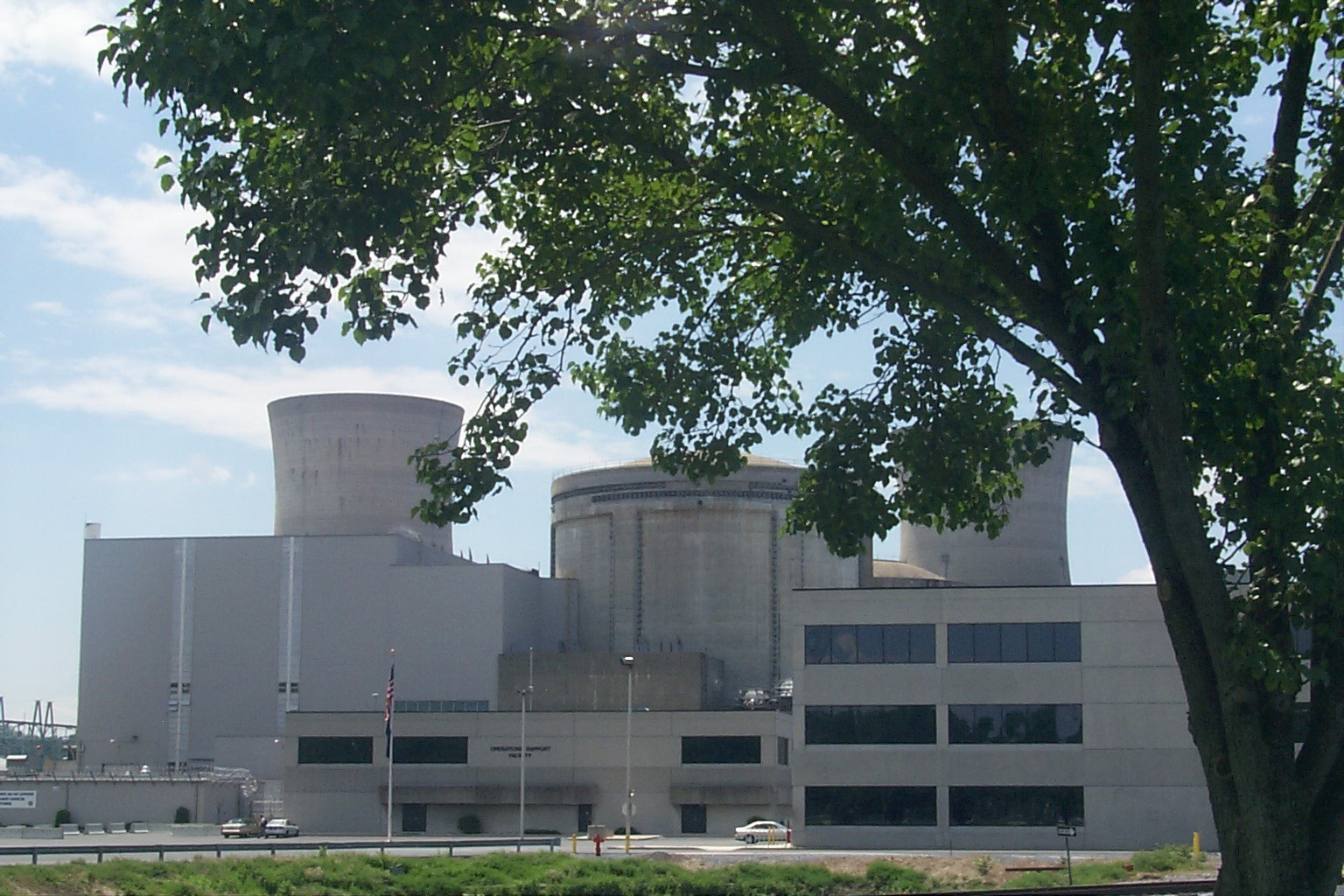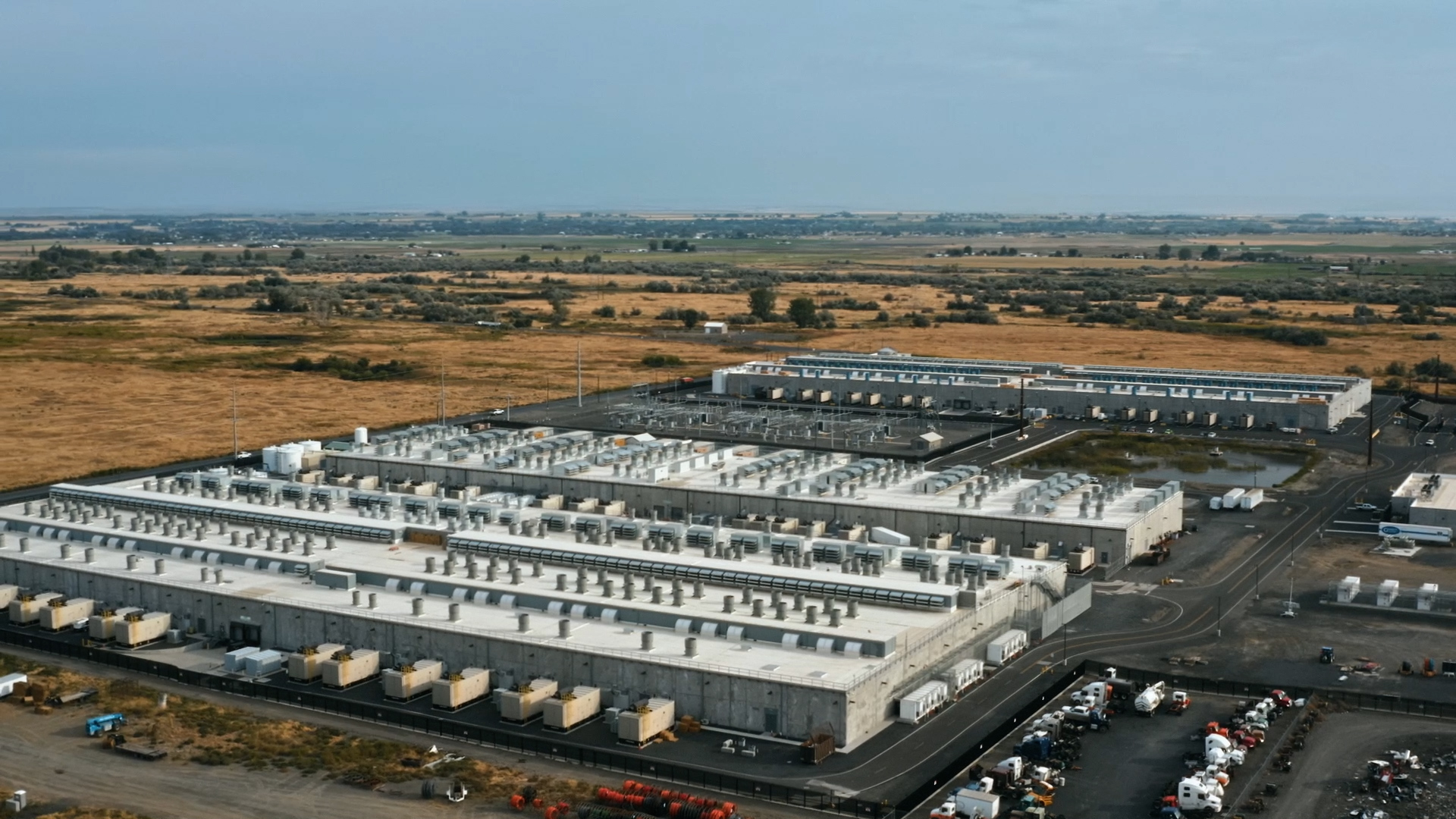Big Tech invests big in nuclear

Three Mile Island Nuclear Station, Unit 1. U.S. NUCLEAR REGULATORY COMMISSION/Exelon
Jan. 20 (ZFJ) — Microsoft, Google, and Amazon are investing in nuclear energy as the race to develop artificial intelligence technologies heats up.
AI technologies, which are currently rapidly gaining traction, demand significant computational power to train and operate. Data centers house the hardware for them and are consuming increasingly more energy.
According to a December 2024 report from Lawrence Berkeley National Laboratory, a U.S. Department of Energy research facility, total American data center electricity usage increased from 58 TWh in 2014 to 176 TWh in 2023. Scientists estimate a 325-580 TWh increase in this usage by 2028. The U.S. Energy Information Administration reports that the nation consumed 94 quads, or over 27,500 TWh of energy, in 2023.
The basic unit of power is a watt (W), which measures instantaneous power. For example, a 100 watt lightbulb would consume 100 watts when turned on. A megawatt (MW) is a million watts, and a terawatt (TW) is a million megawatts.
The total amount of energy consumed over a period of time is measured in watt-hours. Per the U.S. Nuclear Regulatory Commission (NRC), the aforementioned lightbulb, if turned on for four hours, would consume 400 watt-hours (Wh) of energy. A megawatt-hour (MWh) is a million watt-hours, and a terawatt-hour (TWh) is a million megawatt-hours.
MICROSOFT
Microsoft, a major backer of ChatGPT developer OpenAI, announced a power purchase agreement with Constellation Energy on Sept. 20, 2024.
The deal enables Constellation to restart Three Mile Island Nuclear Station’s Unit 1, rated for 835 MW, as the Crane Clean Energy Center.
The Pennsylvania power plant, located on the Susquehanna River in Londonderry Township, near Harrisburg, suffered a partial meltdown on March 28, 1979, destroying Unit 2. However, Unit 1 continued operating until the Exelon Corporation shut it down in 2019, citing a lack of profitability.
Constellation says that it will make “significant investments” to restore the plant’s components, which include its turbine, generator, main power transformer, and cooling and control systems.
The regulatory process for restarting a reactor entails an NRC safety and environmental review as well as state and local government permits.
Microsoft intends to buy energy from the plant to power its data centers on the PJM grid, a regional transmission organization serving 13 states (primarily the Mid-Atlantic) and Washington, D.C.
Constellation expects the nuclear plant to be online in 2028. The company intends to renew its license to extend plant operations to at least 2054.
Google announced a master plant development agreement with Kairos Power on Oct. 14, 2024.
Under this agreement, Kairos will develop small modular reactors (SMRs), station them in areas serving Google’s data centers, and sell the electricity to Google under power purchase agreements.
Google and Kairos say that the first SMR deployment should occur by 2030, with more deployed through 2035, eventually totaling 500 MW of generation. Kairos broke ground on its Hermes non-powered demonstration reactor in Tennessee last summer.
“Nuclear solutions offer a clean, round-the-clock power source that can help us reliably meet electricity demands with carbon-free energy every hour of every day,” reads a statement published in Google’s blog, The Keyword. “Advancing these power sources in close partnership with supportive local communities will rapidly drive the decarbonization of electricity grids around the world.”
Kairos’ technology uses a molten-salt cooling system combined with a ceramic, pebble-type fuel to transport heat to a steam turbine to generate power. Google says that this design allows the reactor to operate at low pressure, making it “simpler” and “more affordable.”
AMAZON
 An Amazon Web Services data center. ENERGY NORTHWEST/Handout
An Amazon Web Services data center. ENERGY NORTHWEST/Handout
Amazon announced three agreements to develop SMRs on Oct. 16, 2024.
Amazon will fund the initial feasibility phase of an SMR project for Energy Northwest, a consortium of state public utilities, at the Columbia Generating Station in Richland, Washington.
Energy Northwest will use the Xe-100 design created by X-energy for a high-temperature gas-cooled reactor. Amazon will have the right to purchase energy from the first project, which is expected to generate 320 MW.
Energy Northwest can then choose to increase the site capacity by 640 MW for a total capacity of 960 MW. The additional energy will be available for Amazon and the company’s member utilities.
Amazon will invest $500 million in a Series C-1 financing round in the X-energy Reactor Company. Series C funding follows seed, A, and B rounds of funding and is meant to scale the company.
X-energy intends to use the money to fund the completion of its reactor design and licensing as well as the first phase of its TRISO-X fuel fabrication facility in Oak Ridge, Tennessee.
It will also work with Amazon to bring over 5 gigawatts (GW) of new power projects online across the U.S. by 2039. X-energy will be supporting Amazon’s partnership with Energy Northwest.
Amazon entered into a memorandum of understanding with Dominion Energy to develop an SMR near the company’s North Anna Power Station in Louisa County, Virginia. The companies expect that it will bring at least 300 MW of power to the Virginia region.
Amazon’s press release notes that the company “previously signed an agreement to co-locate a data center facility” beside Talen Energy’s Pennsylvania nuclear facility and champions the deal as an effort to preserve an existing reactor.
However, the plan to directly power Amazon’s data center has run into issues. On Nov. 1, 2024, the Federal Energy Regulatory Commission (FERC) denied PJM grid’s request for a special contract to sell directly to Amazon, calling it “behind-the-meter.” Talen motioned on Nov. 20, 2024, for FERC to reconsider its decision, but the commission said that it’d address the request for rehearing in a future order.
Amazon noted that it recently announced that it matched its entire energy consumption with renewable energy seven years ahead of its 2030 goal.
References
- U.S. Department of Energy - DOE Releases New Report Evaluating Increase in Electricity Demand from Data Centers - https://www.energy.gov/articles/doe-releases-new-report-evaluating-increase-electricity-demand-data-centers (ARCHIVE)
- Microsoft - Accelerating the addition of carbon-free energy: An update on progress - https://www.microsoft.com/en-us/microsoft-cloud/blog/2024/09/20/accelerating-the-addition-of-carbon-free-energy-an-update-on-progress/ (ARCHIVE)
- Constellation Energy - Constellation to Launch Crane Clean Energy Center, Restoring Jobs and Carbon-Free Power to The Grid - https://www.constellationenergy.com/newsroom/2024/Constellation-to-Launch-Crane-Clean-Energy-Center-Restoring-Jobs-and-Carbon-Free-Power-to-The-Grid.html (ARCHIVE)
- Google - New nuclear clean energy agreement with Kairos Power - https://blog.google/outreach-initiatives/sustainability/google-kairos-power-nuclear-energy-agreement/ (ARCHIVE)
- Kairos Power - Google and Kairos Power Partner to Deploy 500 MW of Clean Electricity Generation - https://kairospower.com/external_updates/google-and-kairos-power-partner-to-deploy-500-mw-of-clean-electricity-generation/ (ARCHIVE)
- Amazon - Amazon signs agreements for innovative nuclear energy projects to address growing energy demands - https://www.aboutamazon.com/news/sustainability/amazon-nuclear-small-modular-reactor-net-carbon-zero (ARCHIVE)
- Energy Northwest - Amazon and Energy Northwest announce plans to develop advanced nuclear technology in Washington - https://www.energy-northwest.com/whoweare/news-and-info/Pages/Amazon-and-Energy-Northwest-announce-plans-to-develop--advanced-nuclear-technology-in-Washington.aspx (ARCHIVE)
- X-energy - Amazon Invests in X-energy to Support Advanced Small Modular Nuclear Reactors and Expand Carbon-Free Power - https://x-energy.com/media/news-releases/amazon-invests-in-x-energy-to-support-advanced-small-modular-nuclear-reactors-and-expand-carbon-free-power (ARCHIVE)
- Dominion Energy - Dominion Energy and Amazon to explore advancement of Small Modular Reactor (SMR) nuclear development in Virginia - https://investors.dominionenergy.com/news/press-release-details/2024/Dominion-Energy-and-Amazon-to-explore-advancement-of-Small-Modular-Reactor-SMR-nuclear-development-in-Virginia/default.aspx (ARCHIVE)
